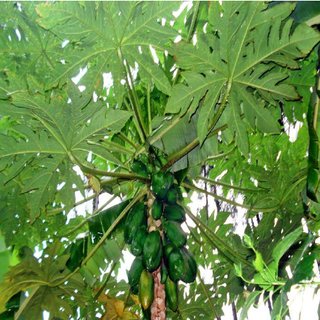The social media has been agog with a series of health claims, and one of these is that mixing pawpaw (papaya) leaf with honey can cure insomnia. But do these natural ingredients really lure you into dreamland?
DevCheck experts weigh in as our findings show that there is no scientific proof that pawpaw leaves paired with honey banish insomnia for good. In fact, using this combo without medical guidance could spell health risks.
With insomnia plaguing millions due to stress, anxiety, and lifestyle chaos, getting the facts on safe, effective treatments is a big deal. So let’s dig into what experts really say about pawpaw leaves, honey, and beating insomnia the right way.
Claim: An X user alleged that Pawpaw leaves ( Papaya) with honey cures insomnia.
Chief herbalist, an X user, stated that pawpaw leaves mixed with honey, cures insomnia in humans.

The tweet garnered over 139,000 views, nearly 2,000 likes, 493 retweets, and 44 comments. While some commentators appreciated Chief Herbalist for his post, others argued that pawpaw leaves mixed with honey cannot cure insomnia in humans.
What is insomnia?
Insomnia is a common sleep disorder characterised by difficulty falling asleep, staying asleep, or getting quality sleep, despite adequate opportunity to do so. According to Cleveland Clinic, an American nonprofit academic medical centre, about 10 per cent of the world’s population experience insomnia that qualifies as a medical condition. It can lead to daytime fatigue, mood disturbances, and other related problems.
Insomnia can have vastly different effects on individuals, ranging from a minor nuisance to a significant life disruption. Similarly, the underlying reasons for insomnia can be just as diverse, highlighting the complexity of this sleep disorder.
While acute insomnia is often triggered by stress, travel, or changes in sleep environment, chronic insomnia lasts for months or years, often related to underlying medical or psychological issues.
Will pawpaw leaves and honey cure sleeplessness?
Pawpaw leaves are commonly known as papaya, or kates. Papaya, scientifically called Carica papaya, belongs to the Caricaceae family. The leaves are high in fiber, a nutrient that supports healthy digestive function and a unique compound called papain.
Honey on the other hand, is a sweet and viscous substance made by several species of bees, the best-known of which are honey bees.
Indeed, pawpaw leaves and honey have various functions and benefits, as they are often used for local herbs. However, research has shown that insomnia’s cure is not guaranteed by the use of the above remedies.
While techniques to potentially improve sleep quality in adults include mindful breathing, progressive muscle relaxation, and visualisation which also reduce stress, one must exercise caution, particularly with infants and older adults and consult healthcare professionals before introducing pawpaw leaves.
Findings
According to a journal on Clinical Sleep Medicine, medications should not be considered before optimising sleep hygiene and implementing behavioral modifications for insomnia. The treatment of chronic insomnia disorder should be based on a diagnosis.
Also, the American Academy of Sleep Medicine (AASM) guidelines on the psychological and behavioral treatments of insomnia show that Cognitive Behavioral Therapy for insomnia (CBT-I) includes sleep hygiene education, relaxation training and other counter-arousal methods.
In fact, a research by the Medical News Today, reveals that unripe papaya an enzyme called papain and taking large amounts of this enzyme could damage the esophagus. Papain may increase bleeding risk.
Experts weigh in
Providing medical insights into the subject, the Dean, Faculty of Pharmaceutical Sciences, Ahmadu Bello University (ABU), Zaria, Mohammed Magaji, a professor of neuropharmacology, said that previous studies have reported the benefit of the leaf of Carica papaya that is, pawpaw, as a sedative, and that a number of ethno-medicinal claims have shown that the leaf is used as a coction in the management of insomnia.

Additionally, he noted that preliminary studies on extract of the leaf of the plant show that it has sedative properties.
“These are studies that were conducted in rodents like mice and rats; no clinical trials have been conducted in humans to show that these benefits or potentials can be translated to humans,” he noted.
While the leaves of the plant have been used as traditional medicine for several years and have shown to have this potential, Mr Magaji explained that the plant extract has been found to contain some phytochemicals that are known to interact with a neurotransmitter that modulates sedation such as gamma-aminobutyric acid (GABA).
He added that carica papaya has also been found to possess antioxidant activity because of some of the phytochemicals it contains.
“It has the potential of being beneficial in the manipulation of sleep, but of course, it is not advocated that this should be used as a mixture and taken quite often. It has health implications because every drug is a potential poison, including herbal medicine and medicinal plants. In context, they must be used with regulation,” he cautioned.
Insomnia, according to the professor, can be treated by managing the underlying cause. “If it is due to the nature of work, food or drink etc. these should be managed. It is only if it is still not treated, then drugs can be used for a short period, not more than four weeks.
“This is because the drug used have abuse liability. They are mostly benzodiazepines e.g Diazepam( Valium)
Similarly, a Registered Nurse/Midwife and Research Nurse at the University of Medical Science Teaching Hospital in Ondo State, Simbiat Olawale, told DevCheck that there is no scientific evidence to support the claim that pawpaw leaves and honey can cure insomnia.

She maintained that most of such claims are usually based on personal experiences and lack rigorous clinical trials or scientific backing.
“While some traditional medicine systems may use pawpaw leaves for various purposes, using them specifically as a sleep aid has not been proven safe or effective in controlled studies,” she said.
The medical expert added that there is currently no well-established pharmacological evidence that pawpaw leaves contain sedative compounds strong enough to induce or improve sleep.
“Some chemicals in the leaves (like flavonoids and alkaloids) have general antioxidant or anti-inflammatory properties, there is no direct evidence of a sedative effect comparable to approved insomnia treatments” she added. “For individuals with chronic conditions like diabetes, hypertension, or liver disease, unregulated herbal remedies may worsen their condition or delay proper treatment.”
Speaking on the medically approved treatments to manage insomnia, Ms Simbiat explained that lifestyle and sleep hygiene changes by limiting screen time, caffeine, and maintaining a consistent sleep schedule.
For medications, she mentioned that sedatives may be prescribed short term under a doctor’s supervision and relaxation techniques such as mindfulness, guided meditation among others.
The medical practitioner concluded that unverified remedies can lead to delayed access to proper medical care, worsening of already existing conditions, adverse effects from unregulated herbal components, false hope and reliance on ineffective treatments.
It also affects public trust in medical science and contributes to misinformation, especially when amplified on social media or by influential figures whom people trust.


